 Over the last few years, innovation consulting got a lot of traction because of the way it enables companies to get better at building the future.
Over the last few years, innovation consulting got a lot of traction because of the way it enables companies to get better at building the future.
But not everyone knows what innovation consulting means.
I’ve been working with a leading innovation consultancy for more than five years. Let me use my experience to explain what innovation consulting is all about.
Lack of a clear definition
It’s hard to define the concept of innovation consulting because there is no set model. Every firm has its own approach. And even within these organising frameworks, they adapt how they do innovation to each of their clients (and sometimes to each project they run).
The reason?
Every innovation challenge is unique. You can’t tackle all of them with inflexible ways of doing things.

To explain what innovation consulting means, I’ll do four things:
- Define innovation
- Answer why companies need support to innovate
- Tell you about the main objectives that innovation consulting seeks to achieve
- Map the innovation landscapes with the main alternatives to innovation consultancies
Let’s get started!
A short definition of innovation
Innovation is often assimilated to new technologies. Artificial intelligence, blockchain, virtual reality… All these technologies sound like they’re connected to innovation.

Yes. Innovation often includes new technology. But that’s not it.
In the world of business and strategy, innovation is about new things that we didn’t do before and that allows us to grow a business.
Is it invention or innovation?
In general, innovation is treated as a synonym of invention. But not all inventions become innovations. And not all innovations come from new inventions.
Let me explain.
An invention is a new idea that can be patented. The patent documents the legal right of having thought of something new first. But it doesn’t mean that this new idea is useful and/or can lead to anyone being interested in buying the underlying product or service.

From a business perspective, an innovation is something new that creates value for others and allows the company to capture some of that value in exchange for having created that value.
Remember: The distinction between invention and innovation is twofold: the right of having thought of something new (invention) and the ability of creating value for others, while capturing value in exchange (innovation).
What’s innovation? What’s not innovation?
An innovation can be as big as a new business that operates independently and as small as a new feature or new marketing initiative that helps grow sales or customer retention.
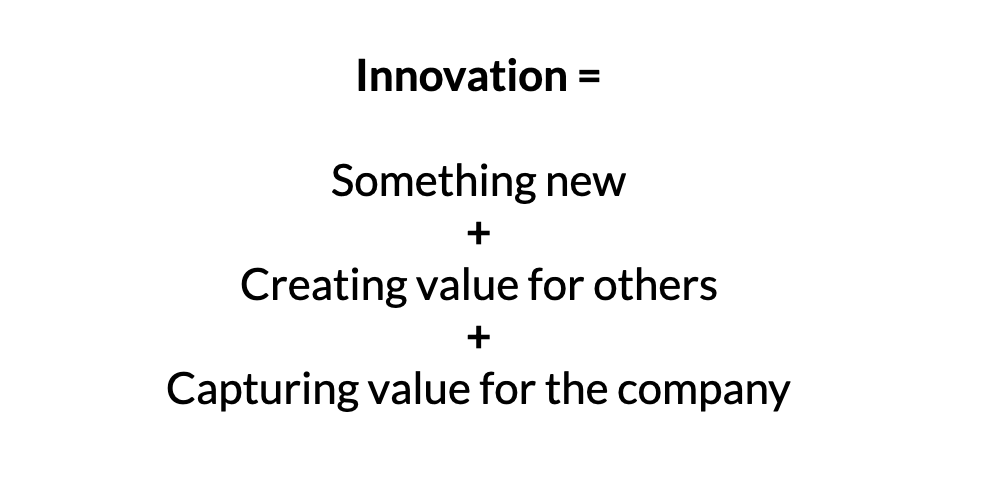
And it can also be about being innovative in the way a company operates, e.g., creating a better hybrid working experience or setting up modular manufacturing capabilities.
Innovation is in the service of creating more value for customers and society to generate growth for a company.
So here’s the question: Why do companies need support to innovate?
Why companies buy innovation consulting services
Large organisations are excellent at executing a plan. Most of these companies have been in the business of doing the same thing well for decades (even centuries).
A lot of these companies have to create new capabilities to challenge themselves and pursue the new opportunities offered by the digital era.
Scaling machines
Organisations that operate at scale are well-oiled machines.
But they are missing one thing.
They’re missing the ability to discover new ways of doing things, and building new brands and new businesses.
A few weeks ago, I heard a senior executive of a global consumer goods company saying that “creating new brands is too hard”, which is why they are now partnering with consultancies.
Exploit or explore?
In the world of algorithms, we make a distinction between two activities:
- Exploiting is about scaling, i.e., the systematic improvement and growth of an existing business
- Exploring focuses on discovery, i.e., creating, testing, and implementing new ideas
Large companies are great at exploiting. They know how to use their resources to generate maximum return on the things they know well.
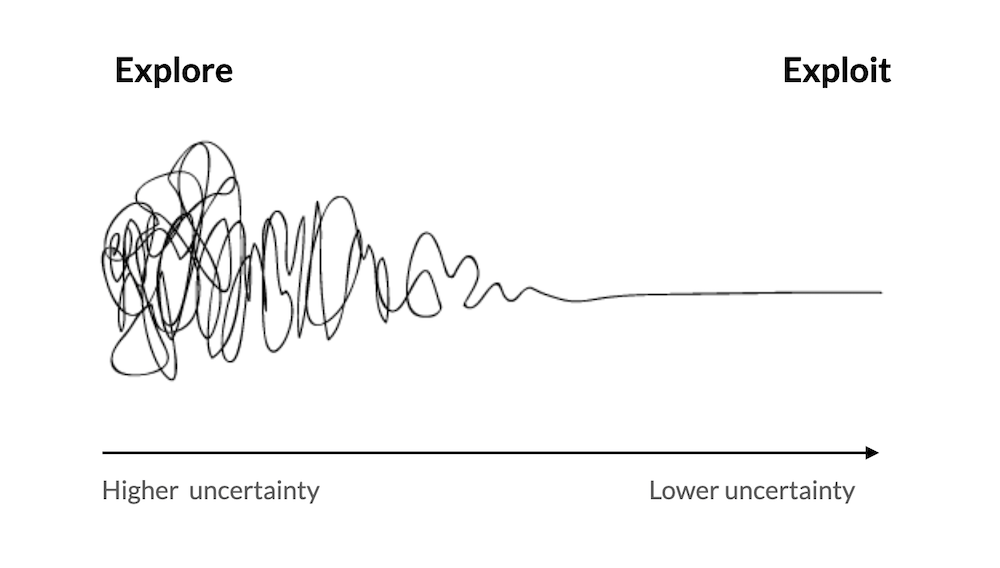
But they need help to explore. Large companies aren’t great at experimenting with new ideas. They tend to need help to deal with high uncertainty.
Exploring is where innovation consulting has a role to play.
Innovation is today’s challenge
The Industrial Revolution led to the creation of complex organisations. In the 20th century, we saw the birth of management consulting firms such as Arthur D. Little (1909) and McKinsey & Company (1926). Their objective is to help companies to optimise the way they operate, so they become more efficient.
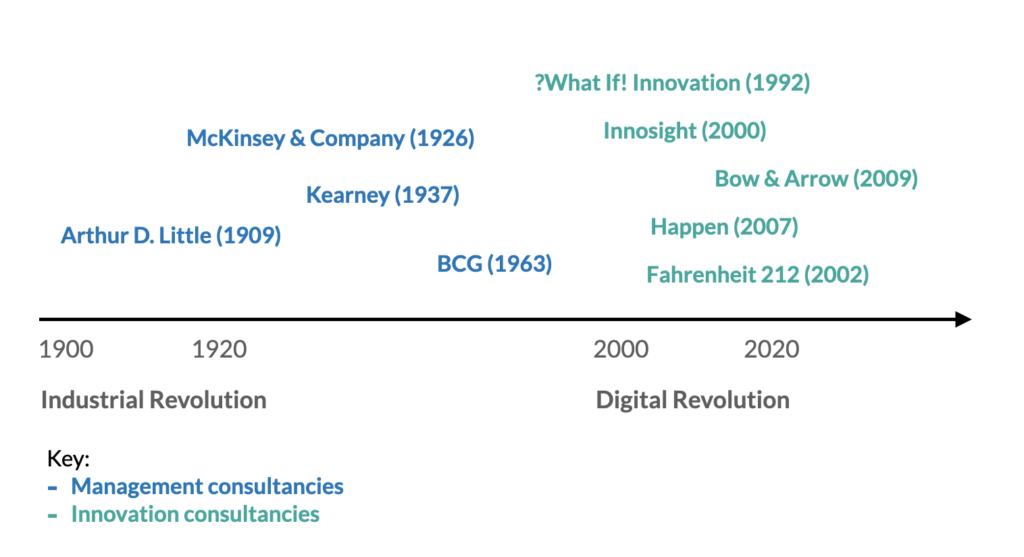
Then, in the 1990s and early 2000s, the Digital Revolution led to the emergence of new technologies and new business models, creating new opportunities to grow. This is a different business landscape where things change much faster. Going after new opportunities requires companies to be fast, operate differently, and get better at innovating. This is in the context of the digital era that innovation consulting firms have a role to play.
A new challenge: If I had to continue the timeline and talk about a third era, I would call it the Sustainability Revolution. Now, most innovation projects have components of sustainability. This is driven by changes in customers’ expectations as well as stricter regulations.
The objectives of innovation consulting
Every company faces different challenges when they try to innovate. That means that innovation consulting has to show up in many different ways to help them.
Go from spotting new business opportunities to generating ideas to seizing those opportunities to helping incubate and build new products, services, and businesses.

Let me share a non-exhaustive list of what an innovation consultancy does.
Spotting new opportunities
A large part of innovation consulting is about helping companies make sense of what’s happening in the world, gain insight of what their customers want, and turn all of this into seizable opportunities.
Read more: If you want to see how companies spot new opportunities, have a look at my latest book, The Opportunity Lenses.
Generating ideas
Another challenge for companies is to come up with ideas that are worth being implemented.
The trick is that to come up with good ideas, you must have lots of bad ideas. But then, you need to eliminate the bad ones quickly, without killing a good one too early.

In reality, we’re far from the infamous brainstorming session.
- Done well, generating ideas involves many people in the company to bring a diversity of perspectives and connect new ideas with existing initiatives.
- It’s iterative in the way it uses several testing cycles to refine those ideas by involving potential customers, suppliers, and employees.
This process is very much iterative.
To sum up: You start with a starter idea and push it through until it becomes a fully formed concept with an action plan attached to it.
De-risk the next steps
The goal of de-risking is to minimize the chances of failure and maximize the chances of success for an innovation project.
This is a critical objective of any innovation project: landing the work in the organisation.

For new ideas to be implemented, several things need to happen:
- They must be connected to the overall strategy and possibly to existing initiatives and workstreams;
- Executives must have confidence that the ideas are feasible, economically viable, and desired by the customers;
- This new plan needs to be packaged into a narrative that’s easily digestable.
Most consultancies will talk about new trends, and cover the importance of being creative and advocate the adoption of a startup mindset.
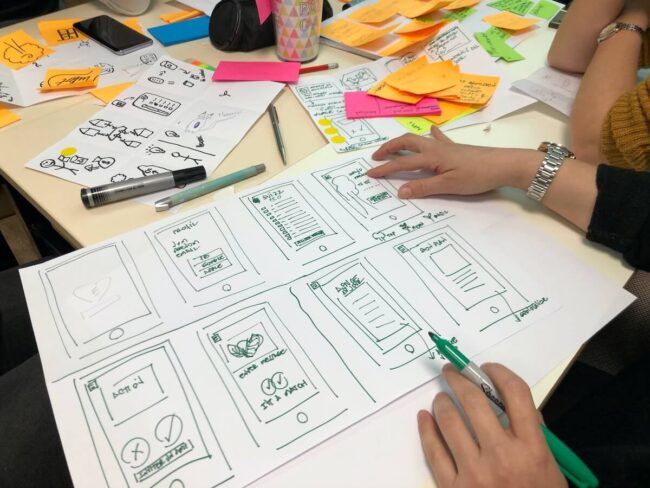
It’s less frequent to meet consultants that truly emphasise the importance of how new ideas will live and grow in the company.
Note: The outcome isn’t always the internal implementation of an idea. It could also be acquiring a business that will help go after an opportunity.
Incubating the future
At the inception of the era of innovation firms, the focus was more on the strategy and the storytelling than on the actual delivery of the innovation.

To differentiate themselves from the competition and companies getting smarter at innovating, innovation consultancies started behaving more like design studios offering both the strategy and the delivery of innovation.
This happened through two ways:
- Building capabilities in-house by hiring designers and software engineers;
- Joining larger consulting groups that already have delivery capabilities.
The holy grail of any innovation engagement: Consultancies aspire to go from spotting an opportunity to imagining new ideas to partnering with the client to deliver the innovation and generate revenue and sustainable impact.
Alternatives to innovation consulting
Innovation consultancies aren’t the only entities that partner with companies to push their innovation agenda. There is a whole suite of partners that do that.
Companies can also set up programmes that can help do this internally.
Other innovation partners
There’s a long list of partners that can help companies to innovate and be more innovative.
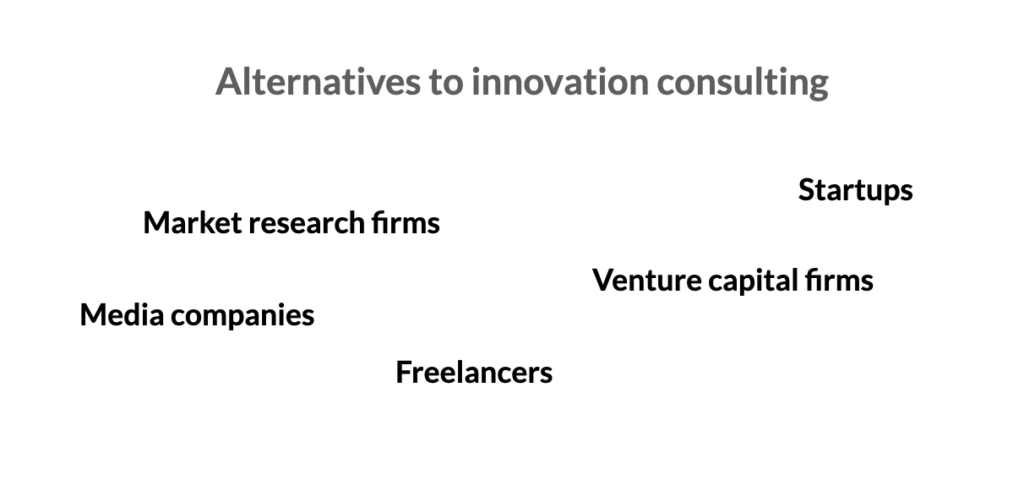
Let me present some of them.
- Market research firms provide insight into new trends and emerging needs to make it easier to spot new business opportunities.
- Media companies (e.g. The Economist, The Wired, The Information, Axios) can run projects that leverage their reporting know-how to inform executives on new trends and help them form a view of how the business landscape is likely to evolve.
- Venture capital firms share their views on what they believe will be the important technologies and business models of the future (though possibly biased by their own investments). They can also facilitate the intro of the startups in their portfolio.
- Startups play a big role in helping experiment with new technologies and new business models. They can do this through partnerships with larger companies or as being part of a corporate venture portfolio. This may even lead to the company acquiring the startup.
- Freelancers tend to play the same role as innovation consultancies, but they are often more specialised and don’t cover such a large range of competencies.
As you see, executives can rely on a wide range of partners to encourage innovation within their companies. Each kind brings its own advantages and disadvantages.
Keep in mind: There is no silver bullet. What’s relevant depends on the challenges that the company faces, and what its executives need to explore the future.
Internal initiatives
There are also many solutions that can be developed internally.
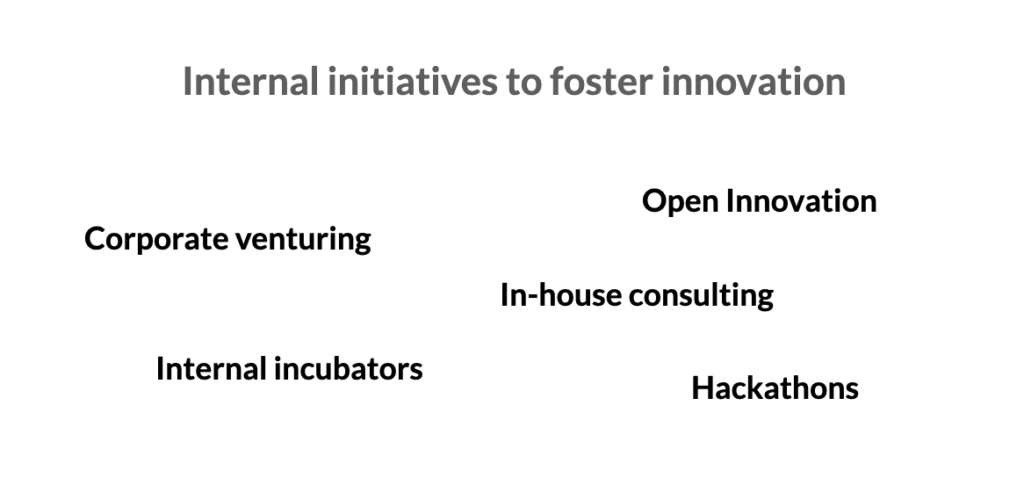
Let me mention a few of them:
- Internal incubators encourage employees to become intrapreneurs and run a startup project within the company.
- Corporate venturing is a way for companies to partner with startups by investing and bringing new expertise and capabilities into .
- In-house consulting plays the role of an innovation consultancy, but it is ran by employees of the company.
- Hackathons are events where employees (and often customers and partners) get together for a few days in order to solve a specific challenge or answer a question about the future.
- Open Innovation includes hackathons but also other ways to involve customers and partners in solving current challenges and encouraging innovation.
This isn’t an exhaustive list. But it captures the main initiatives that you can find in large companies.
Note: In larger organisations, it’s frequent to see that these internal initiatives are actually run by partners such as freelancers or consultancies.
The unique approach of innovation consulting
When you compare innovation consulting to other alternatives, a few things stand out:
- There isn’t a set type of project. Innovation consulting is flexible and projects are tailored to fit the challenges of the organisation.
- It brings end-to-end support. Innovation consulting can touch any part or all parts of the innovation journey, while other alternatives tend to be solutions that help accelerate a specific step.
- It requires a multi-disciplinary team. Innovation consulting isn’t the work of hyper specialised teams. You won’t find a research team and a product team. These capabilities are blended within the team that drives a project, and each team member tends to be a jack-of-all-trades.
All these characteristics make innovation consulting easier to deploy, as you can tailor how you help a company.
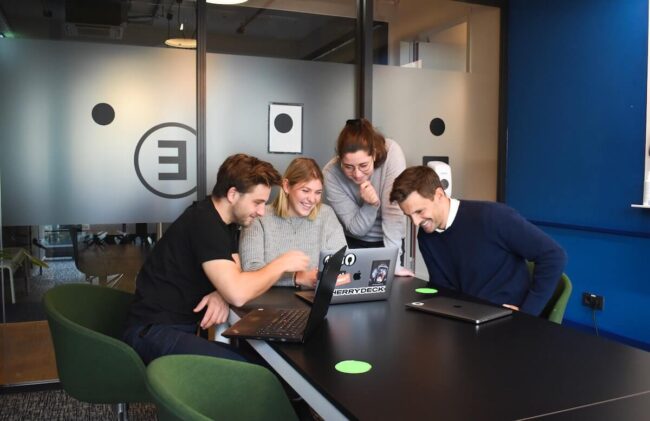
But, it also makes it less scalable, as you need to design a different process for each project you sell. The consultancy must also make sure that it recruits top performers to deliver the work.
More about innovation consulting firms: If you’re interested in innovation consulting, have a look at this list of some of the top innovation consultancies.
Get a job in innovation consulting
Over the last few years, I’ve had such a great ride working in innovation, solving some of the most interesting challenges that large companies are facing.
If you’re interested in joining the space, I encourage you to read my reflections on how to get a job in innovation consulting.
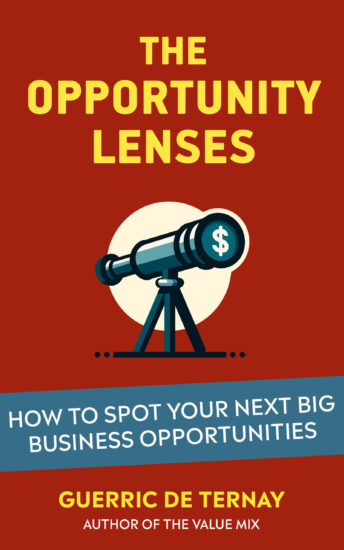
You can also support this type of content by having a look at my two books about innovation:
- The Value Mix will help you learn how to create new value propositions
- The Opportunity Lenses will tell you how to identify new business opportunities